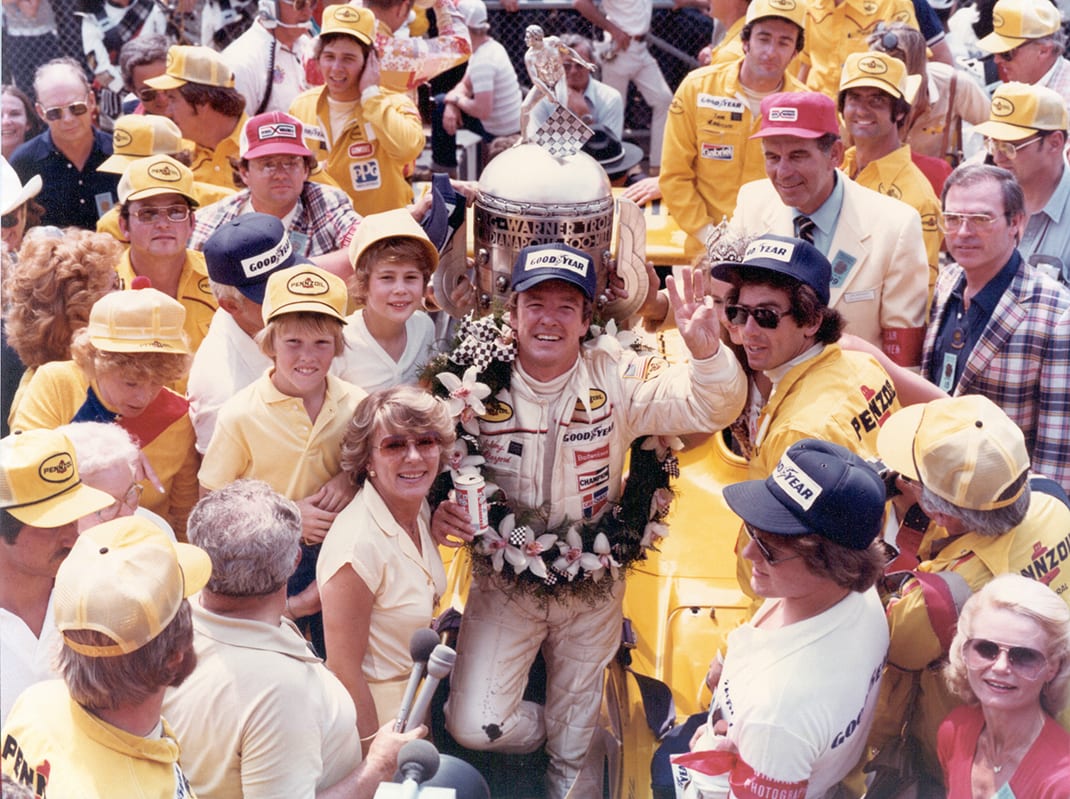Entering the decade of the 1980s, Indy car racing found itself engulfed in controversy, rancorous politics, court injunctions and attempted lockouts.
The sport desperately needed an emissary who could flip the negativity, produced when car owners formed CART and split from USAC two years earlier, into a feel-good story.
They got one in Johnny Rutherford.
The two-time Indianapolis 500 winner was a charismatic, photogenic and talented fan favorite. A well-spoken ambassador of the sport, he appeared on popular afternoon TV talk shows of that era, including “The Mike Douglas Show” and “The Merv Griffin Show.” And he was frequently in the pages of People Magazine and other non-sports publications.
Rutherford’s was a pull-himself-up-by-his-bootstraps American success story. Living primarily with his father after his parents divorced, Rutherford clawed his way to auto racing’s top echelons from the dirt bowls of Texas and through the IMCA fairgrounds tracks of the Midwest.
He made it to Indianapolis Motor Speedway in 1963, where he qualified for the race, then met and, after a whirlwind romance, married nurse Betty Hoyer. His personal efforts at Indy were much more successful than his racing ventures.
Rutherford failed to finish his first 10 Indy 500s. The first time he completed the full 500 miles was in 1974, when he won while driving for Team McLaren.
Rutherford raced for the legendary British team through 1979, seizing 17 Indy car wins, including another 500 in 1976. However, following the 1979 season, McLaren pulled out of Indy car racing.
Without a ride for the first time in seven seasons, the 41-year-old Rutherford faced an uncertain future. Then, a series of events unfolded that landed him in a car that transformed auto racing.
In 1979, John Barnard designed a revolutionary car for builder/owner Jim Hall, who had a reputation for operating on the leading edge of technology. The car was the Chaparral 2K, the first pure-blooded ground-effects Indy car.
With Al Unser driving, it dominated the 1979 Indianapolis 500 until a gearbox seal failed. Teething problems prevented the radical car from displaying its potential until the last race of the season at Phoenix Raceway.
Unser qualified second and ran away from the field, leading 138 of the 150 laps.
Competitors knew they had much catching up to do were they to prevent Unser and Hall from repeating that performance during the 1980 season.
Then suddenly, Unser vacated the sure winner, citing philosophical differences with Hall. Unser felt Hall claimed too much of the credit for the car’s design, ignoring Barnard’s significant contributions.
It was then that McLaren’s Tyler Alexander stepped in and called Hall for Rutherford. Rutherford’s tour of Hall’s Texas shop that followed was only a formality. Rutherford already knew he wanted to drive a car with such incredible promise.
Rutherford’s first laps in the car at Phoenix were anything but promising. Hall had the same setup on the car that was on it when Unser won the season finale in November, however, Rutherford found it undrivable. “It scared me to death,” he vividly recalled.
Fortunately, Steve Robey, who had worked closely with Rutherford at McLaren, also moved, at Rutherford’s insistence, to Hall’s Chaparral team. Robey knew exactly how Rutherford liked his cars.
Observing from the sidelines, he suggested to Hall they switch to heavier springs and different roll bars. Skeptical though he might’ve been, Hall complied.
Click below to continue reading.
